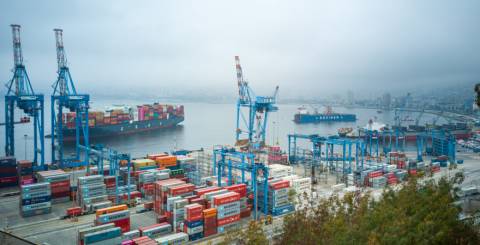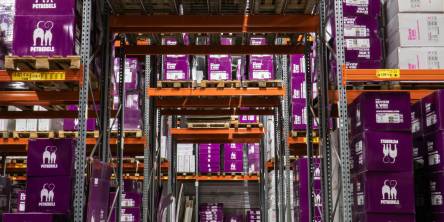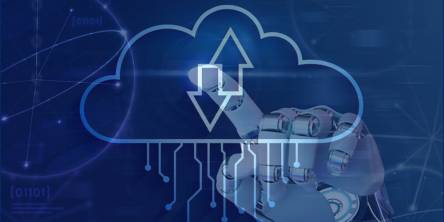Supply Chain Management and Logistics: Key Benefits of IoT

The Internet of Things (IoT) has revolutionized various industries, including supply chain and logistics. Integrating IoT devices, such as sensors and radio-frequency identification (RFID) tags, has provided real-time tracking and monitoring capabilities throughout the supply chain process. It allows for better visibility and control of inventory, assets, and shipments. IoT technology also enables predictive maintenance, reducing downtime and improving overall efficiency. Additionally, data collected from IoT devices can be analyzed to identify patterns and optimize the supply chain process.
The Internet of Things (IoT) has revolutionized managing and monitoring supply chain and logistics operations. Here are some of the benefits IoT brings to supply chain management and logistics:
- Real-time monitoring and tracking: IoT sensors and devices can be used to monitor the location, temperature, humidity, and other environmental factors of goods in transit. It enables logistics managers to track the movement of goods in real time and adjust shipping routes or storage conditions as needed.
- Predictive maintenance: IoT sensors monitor the condition of vehicles, machinery, and other equipment used in logistics operations. This data can be used to predict when care is needed, preventing breakdowns and reducing downtime.
- Improved inventory management: IoT sensors can track inventory levels in real-time, enabling logistics managers to optimize them and reduce the risk of stockouts or overstocks.
- Enhanced security: IoT sensors can monitor cargo containers and trucks, providing real-time alerts if there is any unauthorized access or tampering.
- Improved customer service: IoT sensors can provide customers with real-time updates on the status of their orders, including expected delivery times and any delays.
- Cost savings: By optimizing logistics operations and reducing downtime, IoT can help reduce costs associated with transportation, maintenance, and inventory management.
Overall, integrating IoT in supply chain and logistics can increase transparency, reduce costs, and improve customer satisfaction. Now, allow us to offer you a closer look at the immense potential of IoT for the supply chain and logistics sector:
- Improve efficiency: Incorporating IoT technology in the supply chain allows companies to simplify various tasks, such as locating goods and tracking the movement of raw and finished goods. The technology can also determine transit delays, devise alternate routes, estimate arrival times at specific destinations, and more. IoT in logistics and supply chain management also provides advantages such as improved segmentation, enhanced inventory control, and automated processes. All these abilities, then, ensure enhanced efficiency of supply chain operations.
- Better transparency in inventory management: Inventory management is rendered more transparent and precise with the integration of IoT, as it enables companies to access real-time information about the location and status of every asset, raw material, and finished good. Companies can use this data to monitor and optimize inventory levels in real-time, check inventory status, make informed business decisions, prevent product shortages, and so much more.
- Improved monitoring of storage conditions: IoT technology has also enabled the integration of environmental sensors in logistics, thus allowing companies to track cargo conditions and quickly respond to changes. For example, an IoT-based supply chain system will be able to collate data about pressure, humidity, and temperature inside fleet vehicles — i.e., variables that could compromise the quality of goods — and adjust the environment to maintain the integrity of the products being transported.
- Automation: Today, organizations have come to rely on automation to help minimize the amount of physical labor needed as well as reduce labor costs, mitigate the risk of human error, and accelerate deliveries. With IoT, the supply chain sector has implemented necessary automation in processes. IoT systems are now also using drones to manage warehouses.
Undoubtedly, the idea of integrating advanced technologies, especially one as seemingly complex as the Internet of Things, may seem a tad overwhelming at the outset. Thankfully, as the discussion above demonstrates, the many advantages that the Internet of Things (IoT) brings to the table for the supply chain and logistics industry make it well worth the effort and investment. From substantially improved inventory management to the ability to keep an eye on the operations, including the fleet, in real-time — there is so much that the Internet of Things stands to do for this sector in particular. So, what are you waiting for? Go ahead and start looking for an expert IoT app development services vendor and immediately integrate this technology into your supply chain and logistics operations.
Similar Articles
For modern businesses to thrive, ensuring the effective management of inventory stands has become vitally important. Inventory management stands as a cornerstone of success. And the emergence of the Internet of Things (IoT) has introduced a new era of connectivity and efficiency across diverse industries.
Do you know what the following e-commerce companies have in common: Amazon, Walmart, eBay, and more? All of these e-commerce companies' apps make use of Java. Java is decidedly among the leading choices of programming language for e-commerce applications because it offers a world of benefits; for example, since Java code can be run on any platform with a Java Virtual Machine (JVM), users of e-commerce apps made with Java can access the said apps on a variety of devices.
Nikola Tesla in 1926, once described what is now called a mobile phone as a telephone that can fit into one's “vest pocket.” As otherworldly as that idea was then, nearly a century later, the reality is even more astounding.
Given the staggeringly high amounts of data being generated worldwide every single day, it ought to come as no surprise that organizations often struggle to pick the right tools to help them effectively harness the potential of all their data.
Managing properties can be a difficult task with the right tools. Property owners must find and use the best property management software. It can be a long and tedious process as there are many options in the property management software market.
In the ever-evolving financial services landscape, industry challenges are numerous and complex. From stringent regulations to rapidly advancing technology and changing consumer expectations, financial institutions face many obstacles.
The human learning capability is a great resource for helping technology evolve and grow, breaking boundaries, and creating new ones. Emulating the ability of humans to learn at a gradual but retentive pace, Machine Learning is the latest power monster that is redefining human-machine interaction.
In the ever-evolving landscape of low-code development, Microsoft's Power Platform stands out as a powerful tool for building custom applications. In today's dynamic digital landscape, creating and managing web pages is no longer the exclusive realm of professional web developers
In the data-driven business world, where information is of utmost priority, organizations are increasingly turning to data warehousing and data marts to harness the power of their data. These data management solutions are pivotal in transforming raw data into actionable insights.









